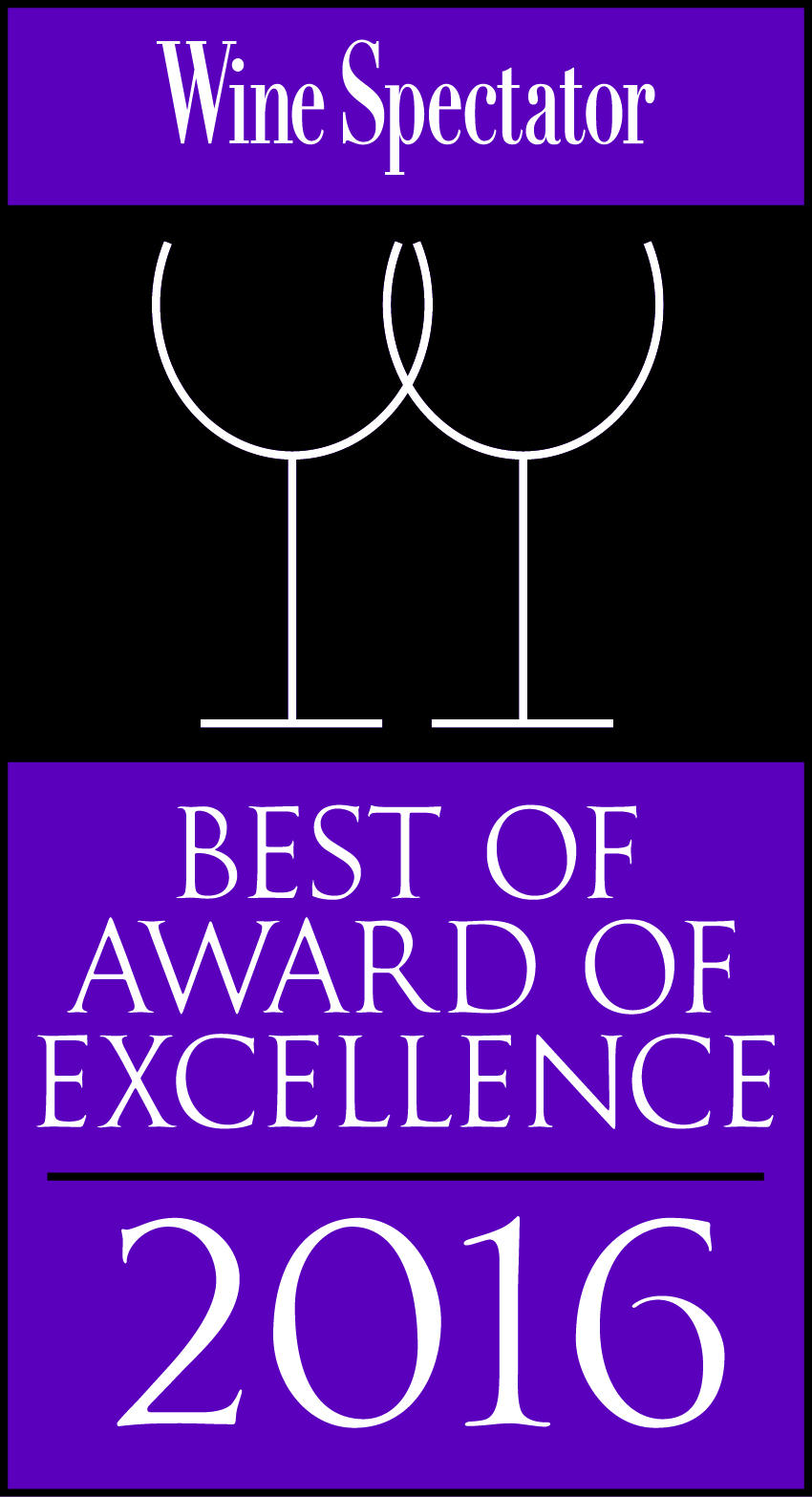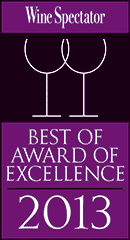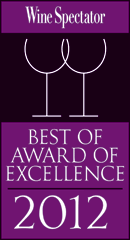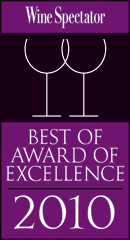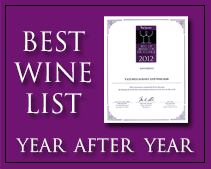Malbec, one of the vaunted “Bordeaux Five” has fallen somewhat out of favor in France.
January 2, 2011
Malbec / Carmenère / Tannat —
A trio of obscure French grapes
cultivate South American legacies
Every major wine region is known for one or two benchmark varieties that have earned it a reputation in all corners of the wine world. Burgundy boasts pinot noir and chardonnay; Bordeaux, cabernet sauvignon and merlot; the Northern Rhône is embodied by syrah; riesling reigns in the Rheingau; Barolo and Barbaresco have nebbiolo, a variety that excels in few other places; and in Spain, tempranillo made its reputation in Rioja. And the list goes on.
Grapes that enjoy a symbiotic relationship with a particular region have generally benefited from decades and even centuries of natural selection and clonal matchmaking between variety and terroir. Rarely are even the most successful of these bondings completely deliberate; the best matchups just seem to evolve over time. And it is sometimes the wallflower variety that thrives in the most unexpected place.
Malbec, one of the vaunted “Bordeaux Five” has fallen somewhat out of favor in France, but it has found a more comfortable home in Argentina. Carmenère, another Bordeaux castoff, is gaining quite a bit of ground in Chile. More surprising perhaps, is tannat’s new lease on life; this relative French unknown has been embraced by Uruguayan winemakers as their great red hope.
Although there’s now a detectable buzz nudging each of these varietals further into the international limelight, for nearly a century, they languished virtually unknown outside their adopted South American countries. With the entry of any relatively obscure varietal into a highly competitive global marketplace, there are always questions: Why Carmenère and not Cabernet? Why Malbec and not Merlot? Why Tannat and not a better known candidate? Will consumers be captivated by these novel wines or dismiss them as oddities? If quality is the sole determining factor, these three wines are going places. And it’s about time. While their journeys from France to South America were not well documented, wine historians estimate that malbec, carmenère and tannat all arrived there with French immigrants in the 19th century.
Although each variety made the transatlantic crossing at about the same time, it is Argentine malbec that seems to have had the head start. Pierre Galet, father of modern French ampelography, was the first to officially identify and record the grape. In his seminal Cépages et Vignobles de France, Galet described in detail a variety he identified variously as côt, cot and malbeck. According to Galet, the variety was once grown in as many as 30 different areas in France, with Bordeaux, Madiran, Cahors and Loire the best known ones. Although malbec acreage has declined in Bordeaux, it is still widely planted in Cahors and is used as a blending component in the Loire. In recent years, though, it has experienced a renaissance in Argentina.
Viticulturists note that malbec performs in Bordeaux much like merlot, with all the same problems (susceptibility to frost, rot and downy mildew), but without yielding the same fresh, fruity quality. Not so in Argentina’s Mendoza Valley, where the high desert climate is drier and more moderate. Malbec, first brought to Argentina in 1852 by French viticulturist Miguel Pouget, has taken a giant step forward since the early 1990s, when there were less then 10,000 acres planted across the entire country and most of the harvest was used for blending, much as it is in Bordeaux. Plantings have since shot up to more than 50,000 acres. One theory holds that the 1994 Catena Malbec, shipped in 1996, was the first varietal bottling to be exported, although the grape was previously showcased in varietal bottlings intended for domestic consumption.
Randle Johnson, winemaker for The Hess Collection in Napa Valley and Colomé, his employer’s South American winery and boutique hotel project located in northwest Argentina’s Salta province, has extensive experience with malbec. He gained much of it during a consultancy at Norton, in the Mendoza Valley and says that malbec flourishes in Argentina because, “Both Mendoza and Colomé have plenty of warm sunshine, long growing seasons and plenty of water from the Andes for irrigation.” But Argentina relies on altitude for the cool temperatures, while other regions, such as Napa and Monterey, by comparison, enjoy cool marine air.
Altitude also figures prominently in providing the proper growing environment for the variety. The malbec vineyards at Colomé are sited at extreme heights, with 24 acres of malbec, ranging in age from 40 to 70 years, along with a smaller plot planted in 2002, perched at 7,650 feet, with another 49 acres (some of which was grafted over from tannat) at a breathless 9,425 feet. For perspective, Mendoza Valley vineyards range in altitude from approximately 2,900 feet to 3,600 feet. José Galente, winemaker for Bodegas Catena Zapata, in Mendoza Valley, works with malbec vineyards ranging from Lunlunta at 2,800 feet to the Adrianna Vineyard at 4,725 feet.
The fact that Malbec, not Merlot or Cabernet, has become Argentina’s flagship red makes complete sense to Johnson. “It develops a very dark color and a rich, full-bodied palate with smooth, ripe tannins, making it a wine for earlier consumption. But the most important reason that Argentine Malbec shines over the other Bordeaux varietals grown here is its complex aromas of red and black fruits with top notes of attractive clove, nutmeg and black pepper.”
He maintains that when cultivated in Argentine soil, malbec becomes more round and fuller in the mouth than does cabernet sauvignon or merlot. “Argentine cabernet sauvignon and merlot can be herbal, but Argentine malbec never is because, as a mid-season ripener, it always gets fully ripe.” He further notes that, “Malbec can handle the heat better than cabernet or merlot, and it seems to be resistant to cooked flavors, while retaining the characteristic spicy aspect.”
Galente adds that the problems with growing malbec in France virtually disappear in Mendoza. “Malbec in Bordeaux had a tendency for shot berries, bunch rot and downy mildew, so after the phylloxera epidemic of the 1860s and the great frost of 1956, most growers did not replant malbec, preferring the other Bordeaux red varieties.” Galente explains that the warm, dry growing conditions in Mendoza allow malbec to fully mature, and notes that “longer hang time allows the tannins to ripen fully.” And although “Mendozan malbec achieves the same typically dark purple color as in Cahors and Bordeaux, the aroma and flavor profiles are riper and fresher,” he says.
Galente stresses that other factors, such as clonal selection and the relationship between altitude and temperature, and altitude and sunlight intensity, are also important to developing the best malbec expression in Argentina. It is this unique expression that he believes has enabled the varietal to rise above the traditionally high-profile reds, like Cabernet Sauvignon and Merlot, in stature.
Because there are no commercial varietal Malbecs from Bordeaux, it is difficult to compare a French Malbec (with the exception of Cahors) with one grown in Argentina. Although those made in Cahors can be dense and powerful, and should have strong appeal to consumers enamored of big, bold wines, most are rustic compared to Mendozan Malbec. The latter typically possess fresh, ripe fruit and, in the finer bottlings, notable finesse.
With top producers such as Catena leading the way, Malbec has already become Argentina’s calling card. In Chile, where Merlot and Cabernet still dominate, varietal Carmenère has a more tenuous toehold. Yet its place there is rich in history.
As Galente noted earlier, in the aftermath of phylloxera’s rampage through the vineyards of Bordeaux in the 19th century, French viticulturists began a culling process, deciding which vines to save and which to pull. Carmenère was deemed an under-performer despite the major role it played during that era, so it got the ax. At about the same time, Chilean winemakers had begun importing cabernet sauvignon and merlot cuttings from Bordeaux.
Fast-forward to the 1990s when worldwide interest in Merlot was rising. Chilean winemakers began to notice that some of what they thought was Merlot didn’t behave or taste like Merlot. A closer inspection revealed that many supposed merlot vineyards in Chile were, in fact, field blends of merlot and carmenère. This inadvertent mix-up gave cast-off carmenère a new “leaf” on life.
Randy Ullom, winemaster for Kendall-Jackson and Chile’s Viña Calina (owned by Jess Jackson), admits that merlot and carmenère are similar, but he says you can tell the two varieties apart if you know what you’re looking for, observing that, “Carmenère has pink-cast leaves and it ripens later than merlot.” The latter point may have been the reason that it was never admitted into the exclusive “Bordeaux Five” club as the sixth member.
Sebastian Lopez, fine wine specialist for Concha y Toro, maintains that in 1983 the winery realized that carmenère was growing in the Peumo Vineyard. “We thought it was a different kind of merlot, nicknaming it ‘Chilean Merlot.'”
Sven Bruchfeld, winemaker for MontGras, notes that a French ampelographer identified carmenère in the winery’s vineyards in the mid-1990s. “We then planted [more] carmenère immediately, because we saw in this variety an opportunity to produce something very good and unique to both Chile and the world wine industry.”
Validated by these new investments in the variety, other Chilean winemakers followed suit. To their collective credit, they disclosed that what the Chilean wine industry had been promoting as distinctive “Chilean Merlot” was, in fact, Carmenère. Their agility turned a potential embarrassment into a marketing success, and helped to vault the undercover varietal into a position of prominence. Besides, no matter its name, Carmenère, with its fruit-forward blackberry flavors and soft palate (derived from the grape’s relatively low tannins) had developed a modest fan base. Alvaro Espinoza, winemaker at Viña Carmen, has the distinction of launching the first commercial Carmenère in 1996, dubbing the varietal bottling “Grand Vidure.” According to MontGras’s Bruchfeld, there are now more than 17,000 acres of carmenère planted throughout the country.
To be at its best, carmenère, like any grape, requires specific growing conditions. Lopez cautions that high-quality carmenère cannot be obtained from poor, stony soils. Rather, he says it requires “balanced soils with similar proportions of clay, loam and sand” and happens to prosper in a few such sites in Chile’s Central Valley. Many prefer the warm locations in Rapel and its two sub-regions, Cachapoal and Colchagua. Lopez notes that after years of research, Concha y Toro determined that the fertile Peumo area in the Cachapoal Valley provides the ideal soil. Climate is vital, too, and carmenère demands an eight- to nine-month growing period in gentle temperatures.
Bruchfeld prefers the Colchagua Valley, where carmenère benefits from warm days and light rains throughout the protracted growing season. “Unlike other Bordeaux varieties, carmenère likes long growing seasons with lots of sunshine,” he says. Viña Errazuriz, one of the country’s leading red wine producers, on the other hand, prefers the northern Aconcagua Valley, northwest of Santiago, for its cool, marine-influenced climate.
What Lopez and Bruchfeld agree on is that Chile has what Lopez calls “a unique opportunity to claim carmenère as the country’s emblematic grape variety.” He acknowledges that while it is also an excellent place to grow many international grape varieties, “Chile has proven to be the only place, so far, where, after disappearing for more than 100 years, carmenère has found ideal conditions for its development.” Bruchfeld views Carmenère as “an attractive alternative” to distinguished red varietals such as Merlot and Cabernet Sauvignon.
Both winemakers admit that Carmenère’s acceptance in the world market may be slow, but are encouraged by the wine’s smooth flavors and versatility with various foods. Bruchfeld sums up Carmenère’s charm best: “Cabernet sauvignon gives a wine structure; merlot, perfume; petit verdot, grip; and malbec, spice. Carmenère provides all of the above in just one variety.”
Whether Chilean carmenère ever displaces cabernet sauvignon as that country’s banner grape remains to be seen. At the moment, it doesn’t enjoy the star power of Argentine malbec, but it clearly possesses much of the same potential. How big a part it will play as a unique expression of South American winemaking will depend largely on how Chilean wineries position the varietal in the world market – as a leading wine or as an understudy to Cabernet Sauvignon.
Tannat, however, need not wait in the wings. Uruguayan winemakers have already cast the once-anonymous grape in a starring role.
In its former life, tannat played only a bit part. Known as the red grape of Gascony – a landlocked region in southwest France best known for prunes, foie gras, Armagnac and, much to the chagrin of Gascons, the Three Musketeers – tannat springs from the small area of Madiran, tucked away in the region’s south corner. Prior to 1970, the rustic, tannic grape was employed as a blending component in a hearty wine named for the Madiran appellation, and it couldn’t compete with the snazzier grapes in the blend: cabernet sauvignon and cabernet franc. Outside of Madiran, tannat never built a following, at least not until it, too, crossed the Atlantic.
Don Pascual Harriague and Don Francisco Vidiella are credited with importing the tannat grape into Uruguay in 1870, where winegrowers soon found that it reached optimal ripeness, unlike in Madiran where variable weather posed more of a problem. Ulysses Gonzalez, export director and assistant winemaker for Viñedo de los Vientos, says that because tannat performed better than the other red Bordeaux varieties that were imported during the same period, “It was an ideal expression of this unique variety.” José Luis Perrone, enologist with the Viticulture Institute of Uruguay, adds that, “The tannat grape is riper, fruitier and with softer tannins than the one from its country of origin.” Perrone further notes that tannat thrives in sandy, rocky soils that are rich in clay.
Canelones, situated on the Atlantic coast, is the largest area for maturing the variety. Most of Uruguay’s 22,000 acres of vines are planted here, of which approximately 3,800 are planted to tannat. The maritime influence and salinity in the soils imparts an earthy minerality to the wines. Other smaller areas that host tannat, mostly on the River Plate and bordering Argentina and Brazil, include San José, Colonia, Soriano, Paysandu, Salto and Artigas. Vineyards are scattered throughout the 18 regions in Uruguay, within which are 18 demarcated viticultural districts, including Cerro Chapeu, Juanico, Las Violetas and Las Piedras.
Juanico Winery and Bodegas Carrau are credited with being the first Uruguayan wineries to market a varietal Tannat, and in 1994 Juanico shipped the first Tannat to the United Kingdom. Juanico export director Christian Wylie says that until the 2004 vintage, global wine consumers had a love/hate relationship with the varietal. “Tannats were too tannic, but now they are balanced with ripe tannins, and some wineries, including Juanico, use cold maceration before fermentation.” Gonzalez believes that today’s wine consumer is more discriminating, preferring the “Old World character” of Tannat. “It is unusual to find ‘Old World’ character in the ‘New World,’ which makes Uruguayan Tannat memorable.”
Uruguayan Tannats are beginning to be noticed by inquisitive American and British wine consumers, but the varietal still has a way to go to catch up with Malbec or even Carmenère. Tannat’s strength is its uniqueness, but too much rustic Old World character may wear thin. To avoid this, Uruguayan winemakers will likely work to achieve more finesse and approachability in their Tannats.
Despite this learning curve, winemaking is a discipline that requires constant vigilance and fine-tuning. With little more than ten years of modern commercial vintages to their credit for each of the three varietals that compose this South American triumvirate, wine quality has been remarkable.
Uprooted from their native soils and transported thousands of miles, each one of these French varieties has finally found a niche in South America, yielding finished wines that are refreshingly distinctive. And when the chief complaint among wine drinkers today is boredom with homogenized, globalized wines, being different is certainly an asset.
Tasting BAR
The following wines were all tasted in their respective varietal group. Although I found standouts in each group, overall I thought the Malbecs performed best, followed by the Carmenères and Tannats. Much of this has to do with age of the vineyards, level of winemaking and winery experience with the specific variety in the international wine market. Unless otherwise noted, all wines are 100 percent of the stated variety. Word scores are based on the BuyLine rating system.
Argentine Malbec
Bianchi, 2003 Malbec, San Rafael, Mendoza – $18: Deep inky purple-ruby; fragrant strawberry aromas, spicy notes; forward, concentrated, supple berry flavors, firm tannins; full tannic finish with good fruit. Very Good
Bianchi, 2003 Particular Malbec, San Rafael, Mendoza – $30: Deep ruby; closed-in blackberry and spice nose, broad spicy oak back notes; concentrated, big, ripe berry flavors; textured, full tannins; long finish with ample fruit; blended with cabernet sauvignon and merlot. Outstanding
Catena, 2002 Malbec, Lunlunta Vineyards, Mendoza – $20: Very deep ruby-violet; lovely black raspberry aroma with cherry-berry notes; rich texture, ripe berry flavors, spice, supported by firm tannins and good acidity; pleasant berry compote in the balanced finish. Outstanding
Catena, 2002 Alta Malbec, Mendoza – $50: Very deep inky ruby; dark fruit aromas, smoky, roasted coffee; blackberry and spice flavors, excellent balance, lush fruit, brisk acidity; a multi-vineyard blend with great structure and finesse. Superb
Bodega Norton, 2003 Malbec, Lujan de Cuyo, Mendoza – $10: Deep purple-ruby; low intensity ripe berry, underlying spice; rich texture, full flavors, lush fruit, subtle oak notes; firm tannins; good length. Very Good
Bodega Norton, 2003 Malbec Reserve, Lujan de Cuyo, Mendoza – $17: Very deep inky-ruby; layered black cherry, plum and exotic spice nose; concentrated flavors, full ripe fruit, nicely integrated oak notes; good length. Outstanding
Terrazas, 2004 Malbec, Mendoza – $10: Very deep ruby; ripe strawberry jam and spice nose; rich texture, lush wild berry and dark plum flavors, balanced tannins and acidity; good length through the finish. Outstanding
Terrazas, 2003 Malbec Reserva, Vistalba – $15: Very deep ruby-garnet; closed-in nose, black cherry, smoky oak; richly textured, good tannin grip, hint of spice and blueberry; long, balanced close. Outstanding
Terrazas, 2001 Afincado Malbec, Las Compuertas Vineyard, Mendoza – $38: Very deep brilliant ruby; spicy French oak nose, low intensity cherry-berry accents; soft, round, supple flavors of berry and spice, firm tannins; long, concentrated finish. Superb
Chilean Carmenère
Baron Philippe de Rothschild, 2003 Carmenère Reserva, Rapel Valley- $10: Medium-deep ruby; forward ripe berry aromas, mineral and road tar back notes; bright dark cherry flavors with a hint of spice; complex, dry finish. Good value. Outstanding
Calina, 2003 Carmenère, Maule Valley – $8: Medium ruby with a purple rim; toasty oak over bright cherry-berry aromas; ripe berry flavors, firm tannins, brisk acidity; good length with ample fruit. Very Good
Carmen, 2003 Carmenère, Rapel Valley – $6: Deep ruby with inky center; slightly herbal nose, spicy notes, low intensity berry scents; forward, plump fruit flavors, firm tannins, medium length; blended with cabernet sauvignon. Good
Carmen, 2003 Reserve Carmenère-Cabernet Sauvignon, Maipo Valley – $15: Dense ruby-garnet; delicate berry aromas, spicy accents; good texture, lush fruit, dry, balanced; refined finish; blended with cabernet sauvignon. Very Good
Concha y Toro, 2004 Carmenère, Chile – $9: Deep purple-ruby; low intensity cherry-berry nose, faint leafy note; rich texture, big plumy flavors, herbal accents, long fruit-packed finish; blended with cabernet sauvignon. Good value. Outstanding
Concha y Toro, 2002 Terrunyo Carmenère, Cachapoal Valley – $28: Opaque ruby; upfront ripe strawberry aromas, low intensity mineral note; complex flavors, ripe berry and spice, refined tannins, good acidity; long, elegant finish; blended with cabernet sauvignon and cabernet franc. Superb
Errazuriz, 2003, Don Maximiano Estate Carmenère, Aconcagua Valley – $25: Very deep violet ruby; big, ripe berry nose, smoked bacon and mineral notes; full-fruit flavors, bit of spice, firm tannins, good length and structure. Outstanding
Luis Felipe Edwards, 2003 Carmenère, Colchagua Valley – $8: Deep ruby; intense dark fruits, exotic spice notes; medium palate, faint tobacco leaf notes, crisp acidity, firm tannins; medium length; blended with cabernet sauvignon. Good
Luis Felipe Edwards, 2003 Carmenère Gran Reserva, Colchagua Valley – $13: Dark inky ruby; bright, complex, forward dark cherry aromas; lush, mouth-filling, ripe berry flavors, hint of spice; medium finish with tapering fruit; blended with cabernet sauvignon. Very Good
Montes, 2003 Purple Angel, Colchagua Valley – $48: Very deep purple-crimson; forward layers of blackberry and black currant aromas, spice and toasted oak back notes; dense, mouth-coating flavors, spicy-plummy, great balance, blended with petit verdot; long finish with no heat. Outstanding
MontGras, 2000 Carmenère Reserva, Colchagua Valley – $10: Dense ruby; black cherry aromas and sweet spice notes; bright, forward flavors, good texture, ample fruit; balanced with good length through the finish. Outstanding
Uruguayan Tannat
Ariano, 2003 Tannat, Canelones – $8: Medium ruby color, violet rim; dark fruit aromas, leafy notes; medium flavors; short finish is a bit coarse. Good
Bodegas Carrau, 2000 Amat Tannat, Cerro Chapeu – $26: Deep inky-ruby; forward spicy oak and light berry nose; medium palate and fruit, good acidity, subtle leafy back note; tannic close tends to overpower fruit. Good
Bodegas Carrau, 2002 Tannat de Reserva, Las Violetas – $12: Medium purple-ruby; moderate dark fruit aromas, spicy note; medium-full cherry-berry flavors, firm tannins and good acidity; medium finish. Good
Toscanini, 2002 Tannat, Canelones – $9: Light-medium ruby; low intensity, bright berry aromas, smoky notes; forward, ripe berry flavors, good texture and structure; long cherry-berry fruit in the close. Very Good
Toscanini, 1999 Tannat Reserve, Canelones – $13: Medium ruby; medium ripe dark fruit aromas, smoked bacon and tobacco accents; big tannic flavors with moderate underlying fruit; medium finish, fruit is drying out; drink now. Very Good
Viñedo de los Vientos, 2000 Tannat, Atlantida – $16: Deep ruby-garnet; forward dark cherry nose, spice and smoky oak notes; ripe berry entry, brisk acidity; big tannic grip with light-medium fruit. Good
Viñedo de los Vientos, 2001 Eolo Tannat Gran Reserva, Atlantida – $30: Deep ruby-garnet; concentrated, ripe dark fruit, roasted nuts, smoked bacon; full tannins, overripe fruit; blended with ruby cabernet; mouth-coating; long, dense finish. Very Good
Vieñdo de los Vientos, NV Alcyone, Atlantia – $25/375 ml: Dark inky color; milk chocolate and vanilla cream nose; chocolate custard texture, hint of candied berries, noticeable alcohol. A unique Tannat dessert wine fortified with grappa that may appeal to those seeking the unusual. Good
Vinson Richards, 2000 Tannat Reserve, Juanico Valley – $20: Medium ruby; forward bright berry aromas, touch of spicy oak; powerful, big tannins, medium rustic dark fruit flavors; big, tannic finish with hints of underlying fruit. Very Good
Viticultores del Uruguay Arerunguá, 2000 Tannat Reserva, Las Violetas – $21: Deep purple-ruby; inviting bright berry nose with hints of exotic spices; medium flavors and fruit, big tannins, astringent finish with lingering fruit. Concentrated wine made for the long haul. Very Good
Source: http://www.thewinenews.com/augsep05/feat.asp
Are these articles useful for enhancing your wine and dine experience in the Philippines. Do they also help you with travel, leisure, vacation, dining out, nightlife and other leisure activities plans in Manila and other major cities of Philippines? Yats Restaurant hopes to provide you with ample information so you can plan your trips to Pampanga Angeles City Clark Freeport Zone whether you are travelling from Manila or other Asian countries such as Hong Kong, Shanghai, Singapore, Malaysia or Korea.
Restaurant reservations in Manila Philippines, planning of menu, selection of wine for dinner and booking a private function and event in Angeles City Clark Freeport Zone can all be handled. Yats Restaurant and Wine Bar has been regarded by many to be the premier restaurant north of Manila Philippines. Its 3000-line award-winning restaurant wine list has kept many wine lovers happy dining in this restaurant in Angeles City Clark Philippines for over a decade.
Yats Restaurant and Wine Bar was built by Hong Kong-based Yats International in 2000 to provide a world-class cozy fine dining restaurant, business meeting facilities and venues for private dinners and functions in Pampanga Angeles City Clark Freeport Zone. Pampanga Angeles City Clark Philippines was selected for this restaurant because of safety, clean air, absence of traffic and proximity to Manila and Subic.
For comments, inquiries and reservations, email Restaurant@Yats-International.com or call these numbers:
(045) 599-5600 0922-870-5178 0917-520-4401
Http://www.YatsRestaurant.com
Getting to this fine dining restaurant of Angeles City Clark Freeport Zone Pampanga Philippines
How to get to this fine-dining restaurant in Clark Philippines? Once you get to Clark Freeport, go straight until you hit Mimosa. After you enter Mimosa, stay on the left on Mimosa Drive, go past the Holiday Inn and Yats Restaurant (green top, independent 1-storey structure) is on your left. Just past the Yats Restaurant is the London Pub.
